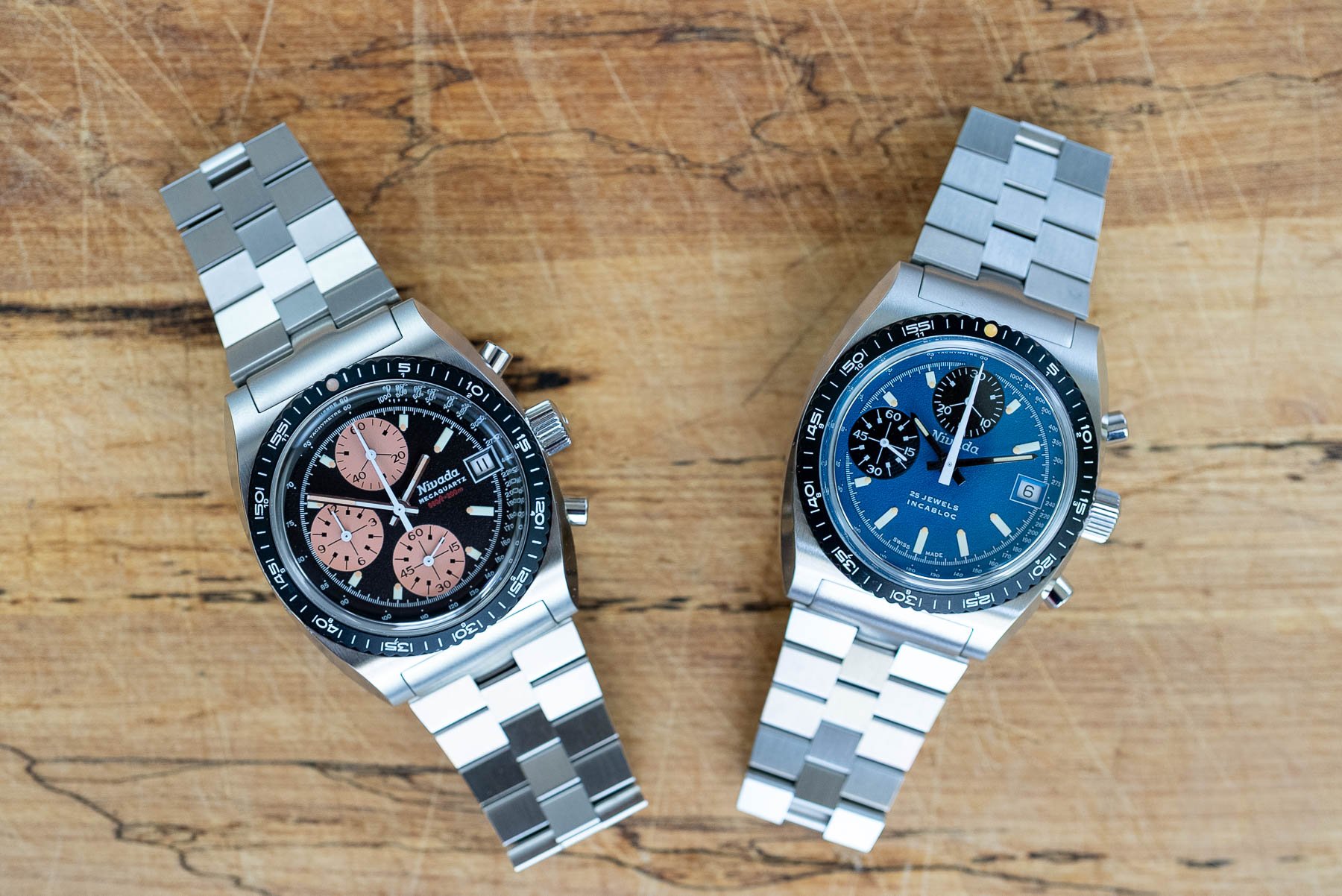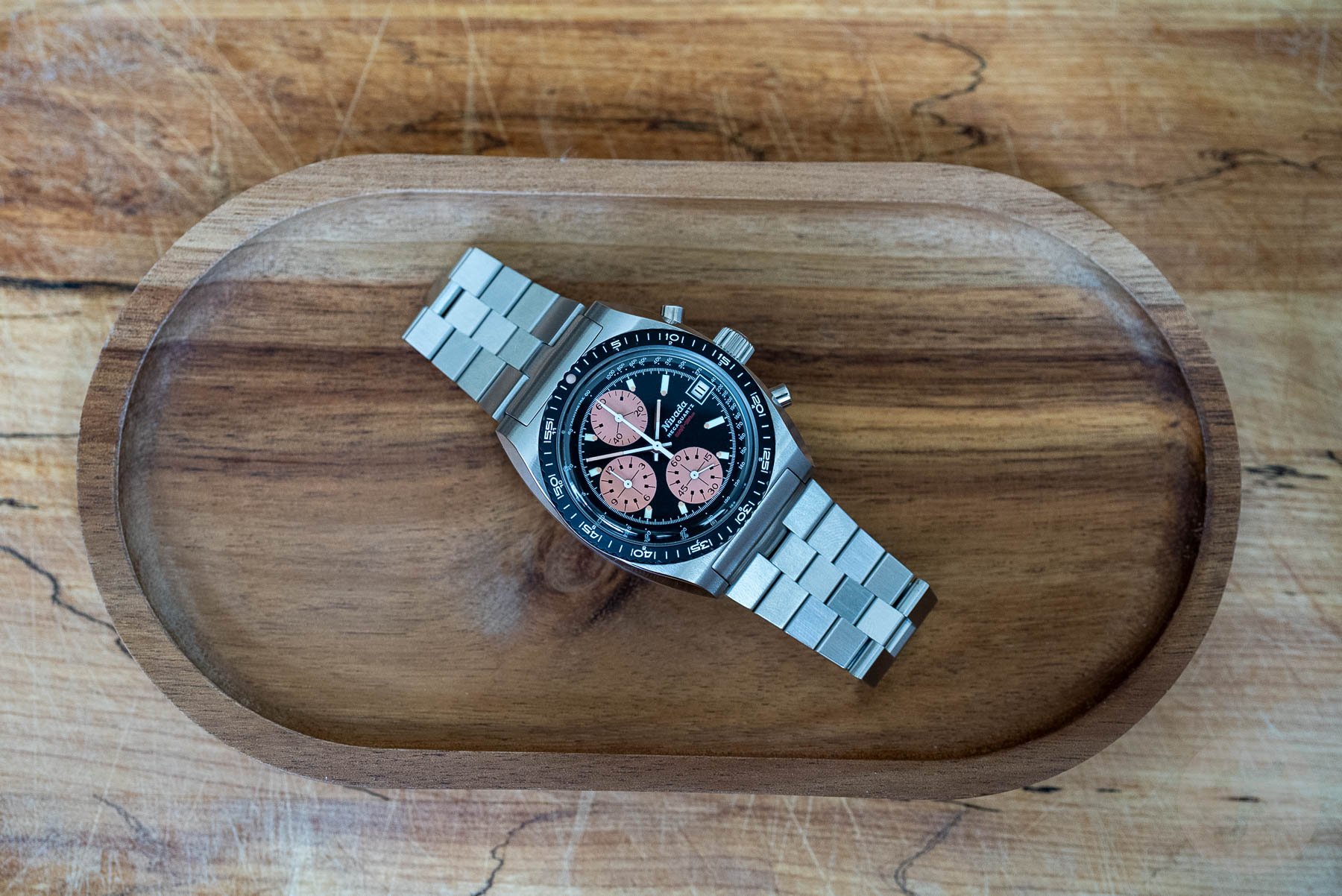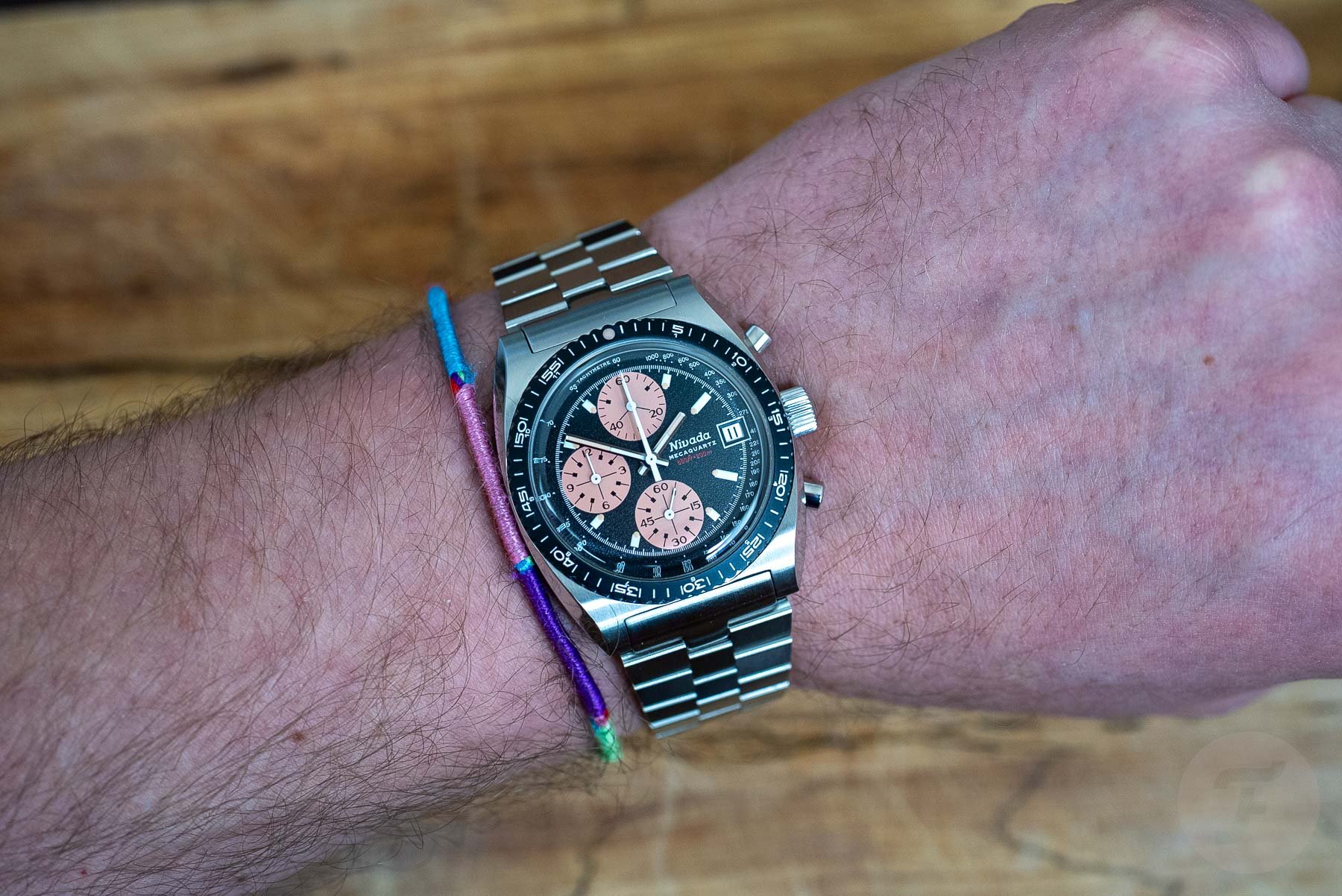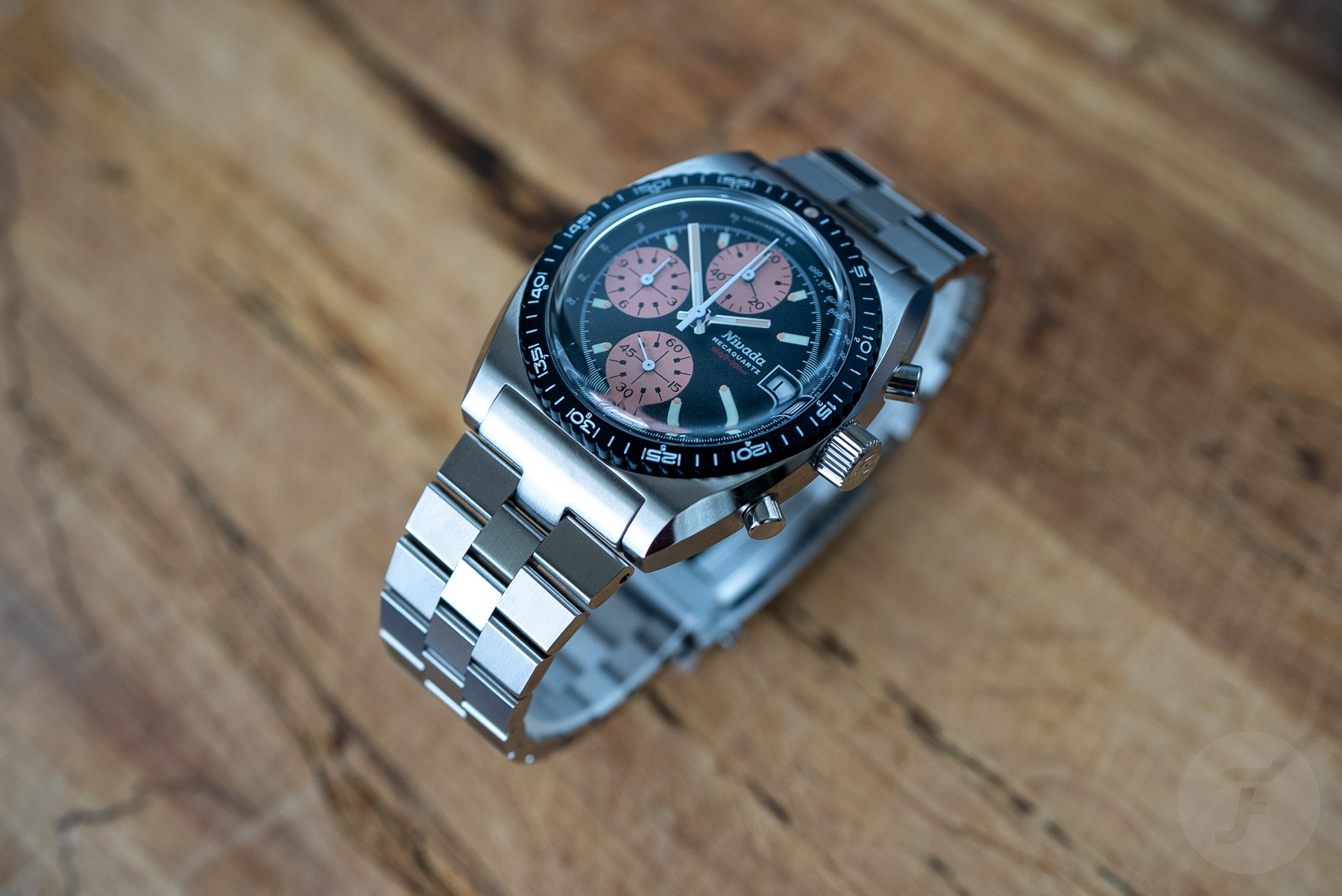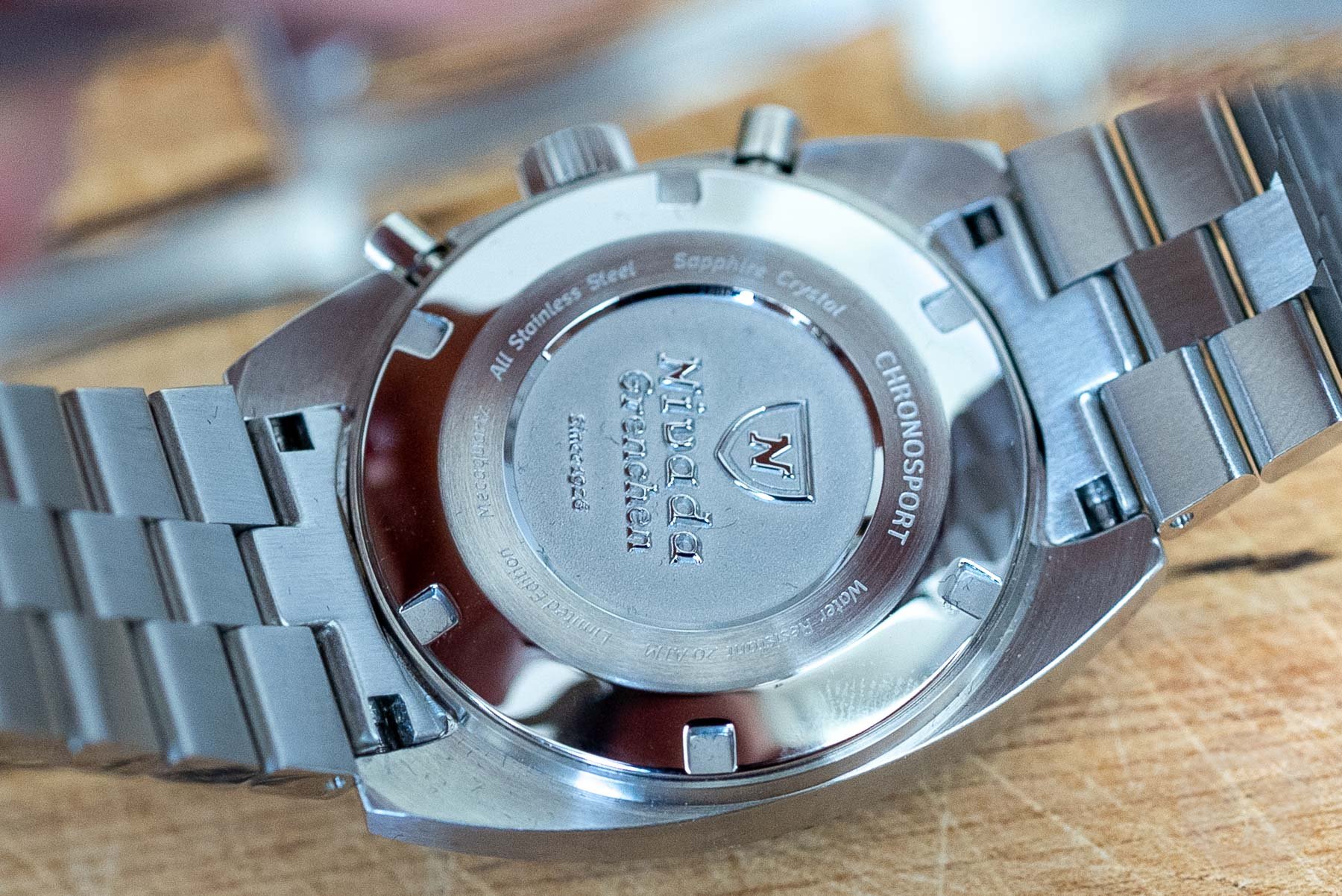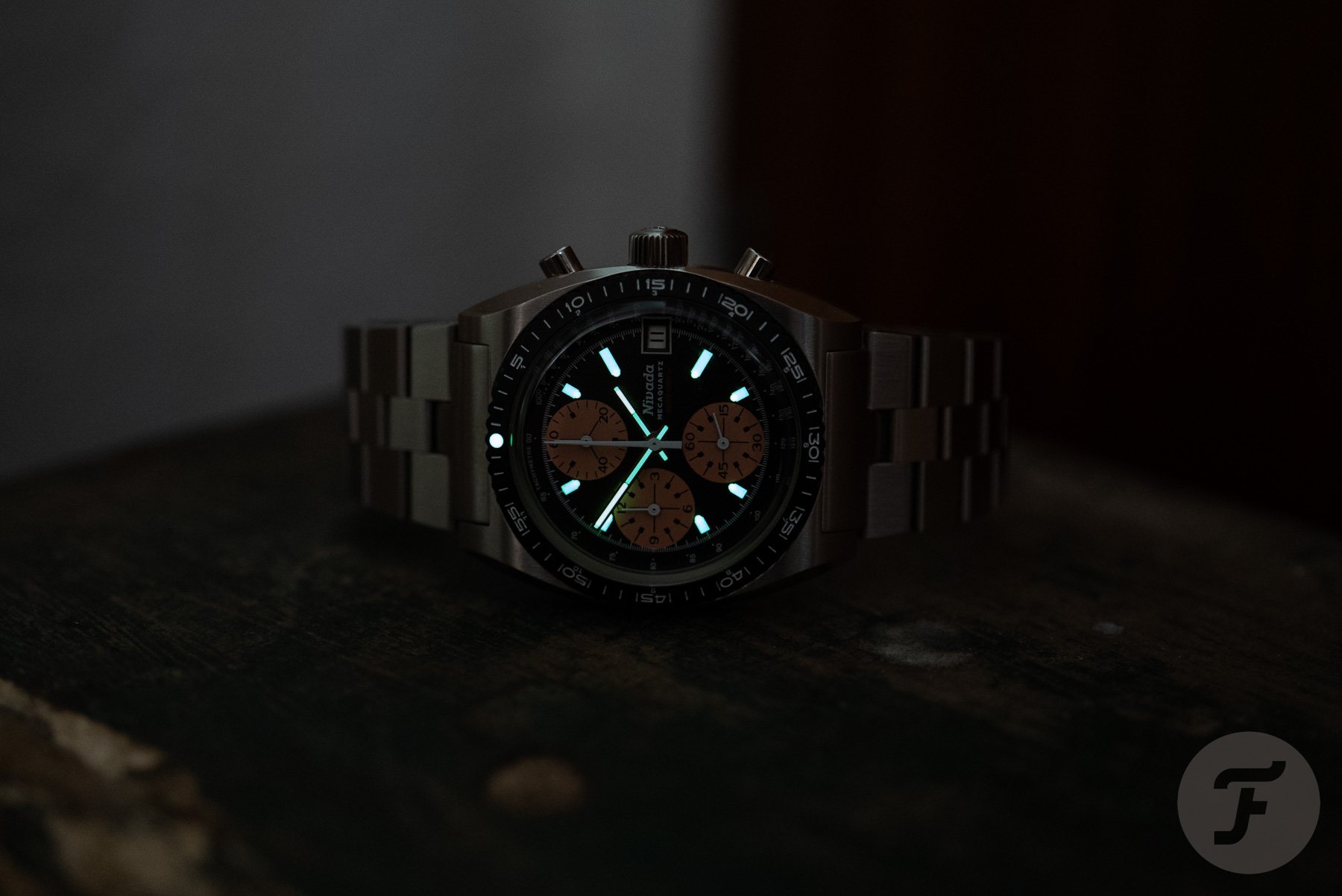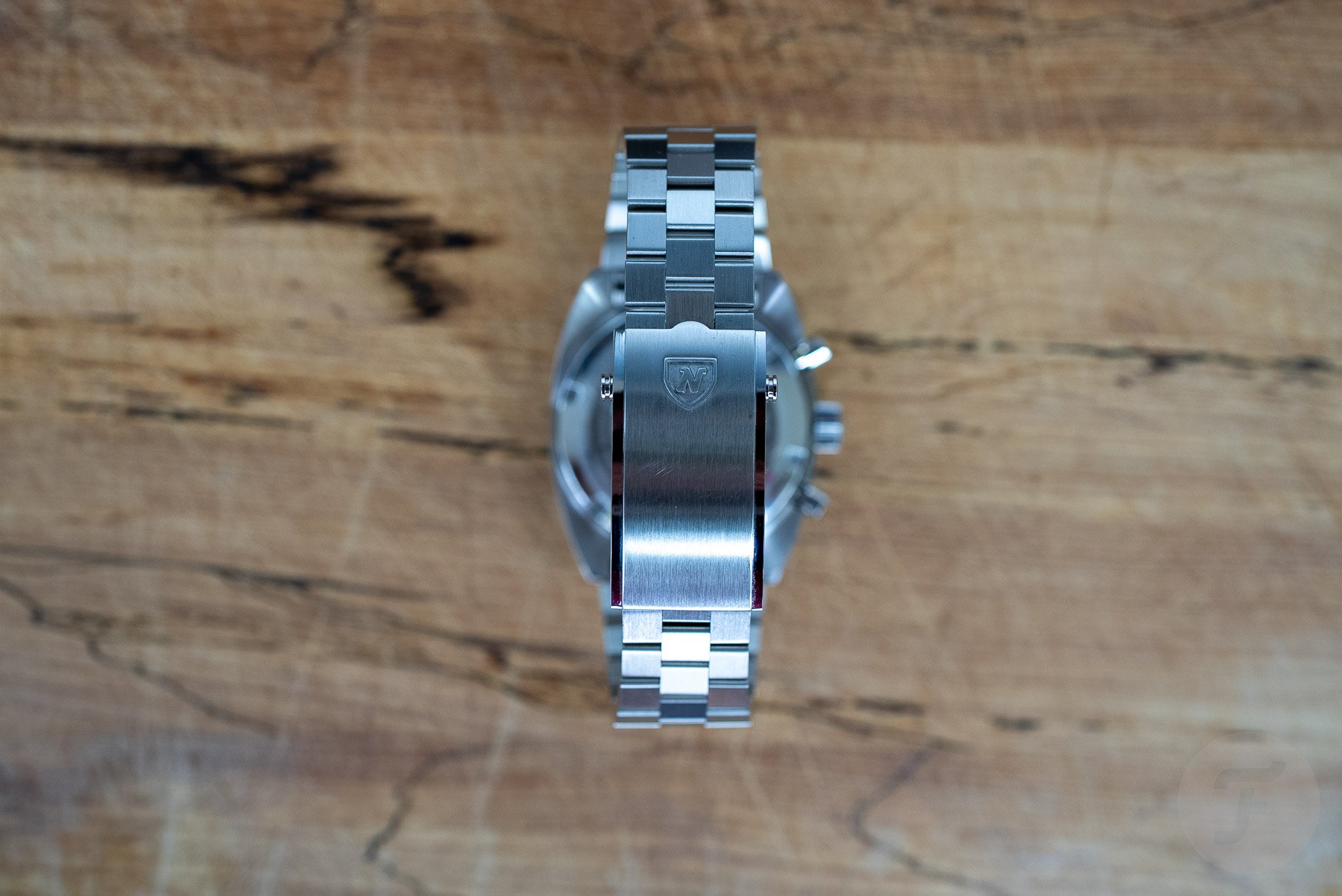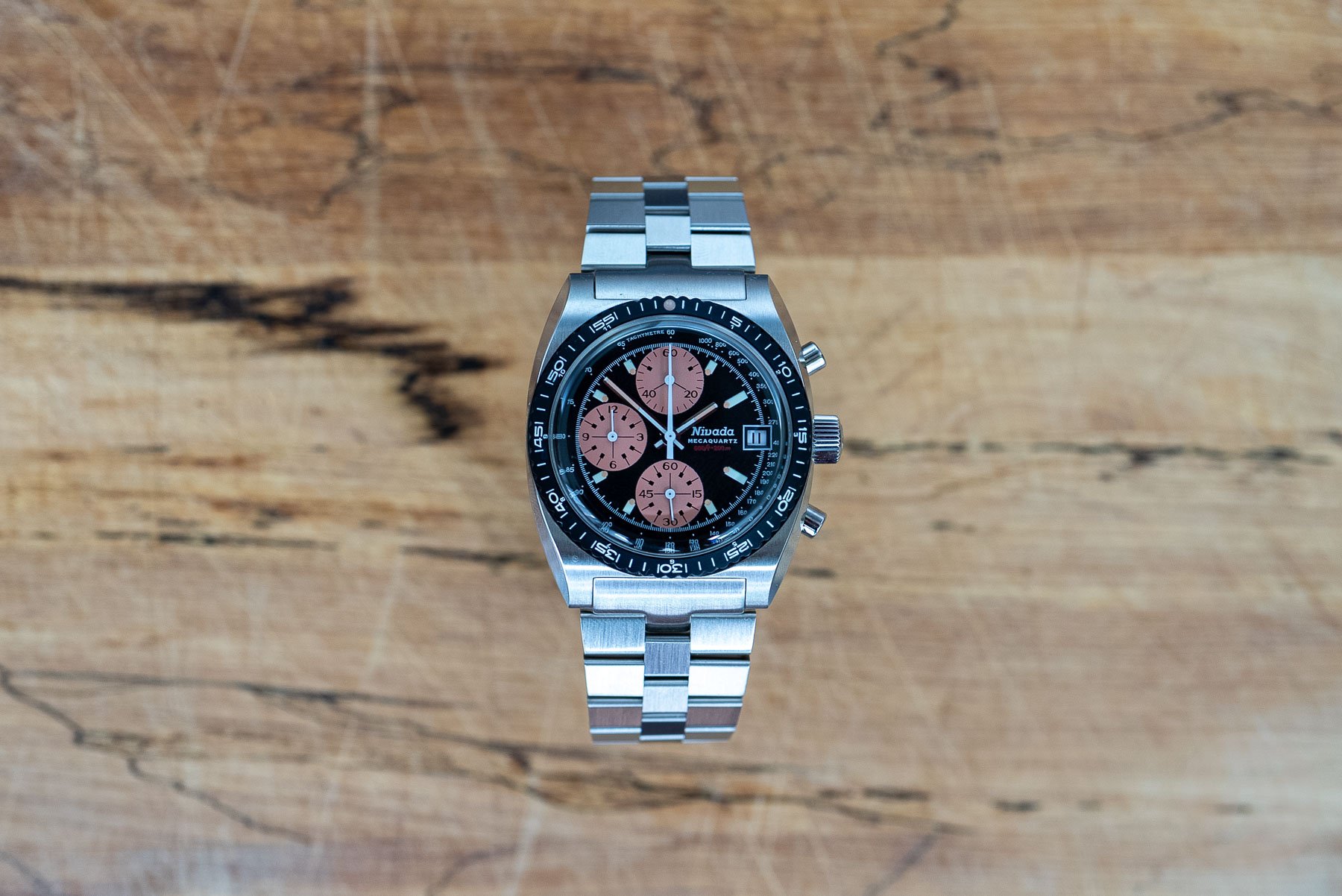Hands-On With The Nivada Grenchen Chronosport Mecaquartz Salmon
Many love an excellent mecaquartz chronograph. Brands can spend more money on the looks of such watches thanks to their affordable movements. These watches often punch above their weight, at least visually. Others say they are cheap interpretations of the real deal, a timepiece with a mechanical movement. I received the new Nivada Chronosport Blue (automatic) and the Chronosport Mecaquartz Salmon simultaneously, and the latter felt as good as the former. Now, just a few days after publishing my review of the Chronosport Blue, here are my thoughts on the Chronosport Mecaquartz Salmon.
Before we get into it, you should know that the Salmon version pictured here is, sadly, no longer available. It was only for sale during a pre-order window, but due to an unfortunate miscommunication, we were not able to publish this article in a more timely fashion. Our apologies for that, and we hope, if nothing else, this article will still serve as a useful review of the Chronosport Mecaquartz in general. Also, I should note that I’m not trying to directly compare the Mecaquartz version(s) to the mechanical Chronosport models. Aside from their looks, we are talking about very different timepieces. Still, we cannot speak about the Chronosport Mecaquartz Salmon without mentioning the Chronosport Blue since they came out simultaneously.
The Nivada Chronosport
The first modern Nivada Chronosport, which I reviewed a while back, comes in two versions. You can get it with modern white lume, or for a more vintage feel, you can opt for yellow lume. My review watch had the latter. Soon after, Nivada released the Chronosport Mecaquartz to serve an audience with less budget but equal thirst for vintage-inspired chronographs. The Mecaquartz takes inspiration from the regular Chronosport, but it has a 12-9-6 sub-dial layout instead of just two sub-dials. It starts at just €550 versus €2,395 (and more) for the mechanical automatic version. Both examples draw direct lineage to the original Chronosport from the late 1970s. Recently, Nivada expanded the line with a new blue-dial version of the mechanical Chronosport and the limited-edition Mecaquartz Salmon model you see here.
Chronosport Mecaquartz Salmon
To the naked eye, the Nivada Chronosport Mecaquartz Salmon looks familiar. That’s because the first Chronosport Mecaquartz comes with a black dial and taupe sub-dials. The Salmon model looks identical, aside from the different color sub-dials. As the brand puts it, the “matte black textured dial is adorned with Art Deco-inspired sub-dials in salmon tones, adding depth and a unique vintage appeal.”
Indeed, the pair of salmon and black is an age-old trick in the watch industry that works, just like the Singer-style minute scale on the sub-dials. I can even forgive Nivada for the 12-9-6 sub-dial layout, which is not in style (I wonder if it ever was). At 3 o’clock, Nivada added a date aperture to counterbalance the salmon subs. The only downside is that the bezel rotates while adjusting the quick-set date, but I can live with that.
On the wrist
The most important thing you need to remember when wearing the Nivada Chronosport Mecaquartz is that, with the bracelet, it’s a €770 watch. If this were a game, I’d call it a cheat code. The movement makes the price significantly lower than the automatic versions. Consequently, it is not Swiss made like its big brother is. Yes, the dial layout is similar but not identical. Looking at two of the watch’s dimensions, they are the same as the mechanical version, with a 38mm diameter and a 44.8mm lug-to-lug. Notably, though, since the movement is thinner, this model has a 13.3mm profile, including the crystal, equaling a 2.4mm reduction from its mechanical counterpart. The weight, at 143 grams, is only 20 grams less. It has the essence of the vintage/modern mechanical Chronosport with, some may say, an even better execution, being balanced in looks, weight distribution, and bang for the buck.
Usability
The advantage of three sub-dials is evident. At the 6 o’clock position, we find the running seconds with that unmistakable quartz ticking, followed by the 12-hour counter for the chronograph at 9 o’clock. At 12, we have the 60-minute counter. All in all, it’s a clear and legible watch face with yellow faux-patina lume in the hands and indexes and a small but readable date aperture.
Yet, just like with the Chronosport Blue, I cannot use the tachymeter scale printed on the edge of the dial. It is small and impossible to read, and the double-domed sapphire crystal distorts the view. Furthermore, the aluminum bidirectional 60-minute/12-hour bezel is so loose that it moves whenever I touch the watch. Then again, I received an early prototype, so perhaps it’s been remedied since then. Thankfully, the mechanical action on the start/stop and reset pushers is there, and the watch does not feel like some cheap copy but a coherent timepiece.
The movement inside
Let’s spend a minute on the caliber. Inside the Nivada Chronosport Mecaquartz ticks Seiko’s VK67 mecaquartz movement. One of the go-to calibers for mecaquartz watches, the VK67 offers a mechanical chronograph module and a tuning-fork-style quartz technology for the main functions. It is a simple but efficient movement that allows brands to keep the price low and spend the money on features like the 316L case, the bracelet with micro-adjustment and push buttons, and the 200m water resistance. Also, the VK67 gives you an accuracy of about ±20 seconds per month. With the Chronosport Mecaquartz, you get all this for less than €800 on a bracelet or under €600 on a strap.
Closing words
Speaking of the bracelet, the Chronosport Mecaquartz has the same one as the automatic model. The new clasp has two push buttons to secure it and a built-in micro-adjustment mechanism. This allows a +13mm bracelet extension should you need it. If you ask me, quick-release spring bars should now be the norm for leather straps. Equally, a micro-adjust clasp should now be standard for steel bracelets. I’m looking at you, Grand Seiko.
If you opt for the bracelet, you’ll spend €770 / US$700. Should you opt instead for a leather strap or a rubber Tropic-style one, the price drops to €550 / US$500. I suggest going with the bracelet, though. While it’s more expensive, you can always remove it and use whatever 20mm strap you wish. If you never decide to move the watch on, however, the presence of the original bracelet is a huge plus — just my two cents.
All in all, we should not look at the mecaquartz Nivada Chronosport as a cheap and inferior version of its big brother. Rather, the watch holds its own. I stand by my initial statement that it felt just as good as the mechanical version, the only major differences being the movement types and prices. While I wish we’d been able to let you know about the now-unavailable Salmon version sooner, the regular Chronosport Mecaquartz still offers excellent value for the money spent.

